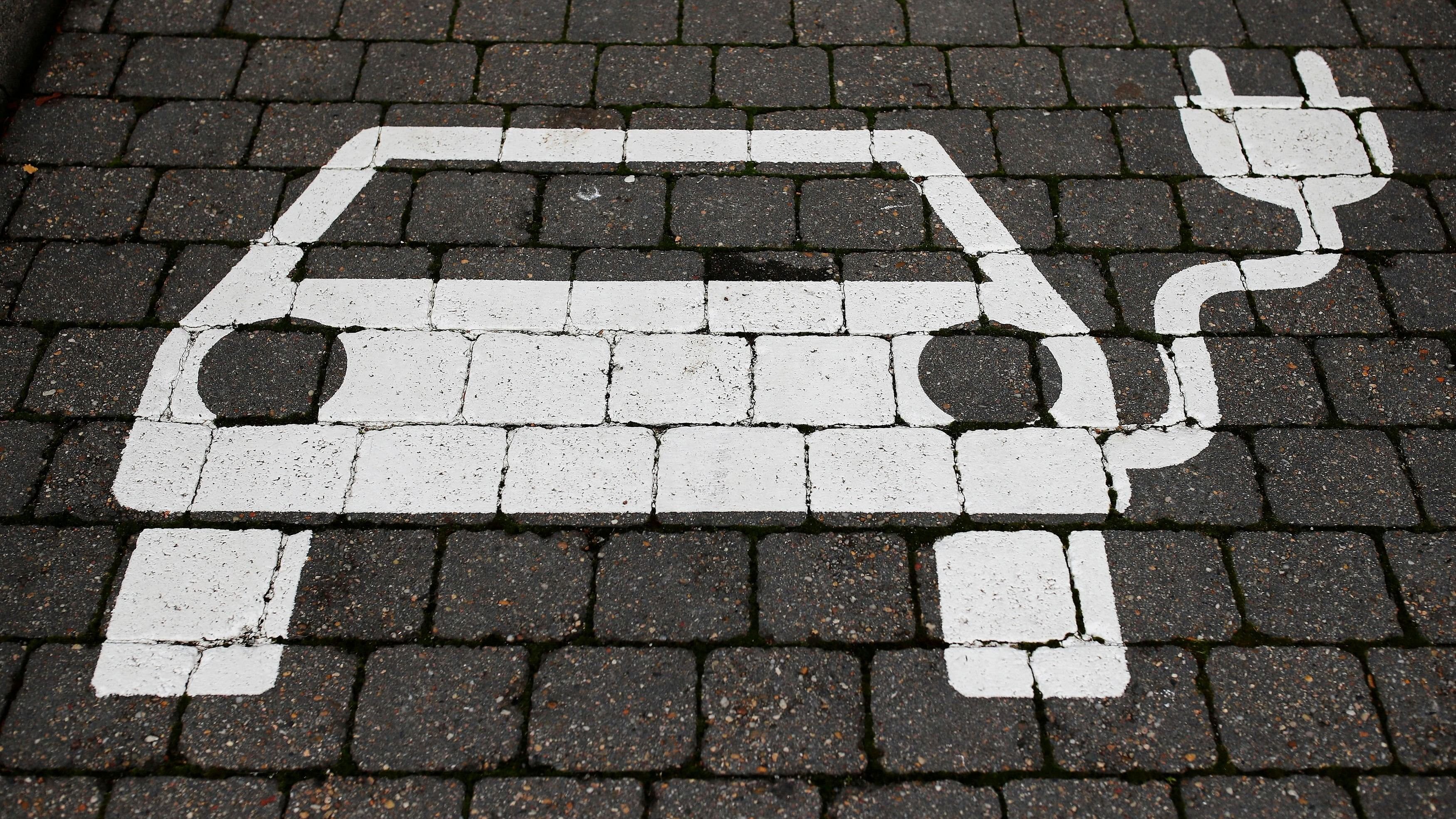
A parking sign for electric vehicles.
Credit: Reuters Photo
By Liam Denning
The US is somehow home to the most valuable electric vehicle producer in the world and, simultaneously, an also-ran in the race for EVs. How did that happen?
As recently as 2016, the US had more EVs on the road than China did. Now China has raced ahead.
Credit: Bloomberg Opinion
Despite Tesla Inc.’s pioneering role in bringing electrification into the mainstream, the US EV effort is beset by angst. While sales jumped by 44 per cent last year, that is expected to slow markedly in 2024, with signs of retreat not just in Detroit but at Tesla itself. Tesla briefly lost its crown as the world’s biggest battery EV producer in the fourth quarter of 2023 to BYD Co. Ltd. and will likely do so again. Chief executive Elon Musk is on record saying that, absent trade barriers, Chinese manufacturers “will pretty much demolish most other car companies in the world.” Tesla’s gigantic valuation these days has more to do with visions of robotaxis rather than EV leadership, per se.
That China has stolen a march on the US when it comes to EVs is indisputable. It isn’t just that China accounts for six-in-10 of every EV sold worldwide, it also dominates the supply chain for the critical technology inside them: Lithium-ion batteries. China holds between 85 per cent and 95 per cent of production capacity for each of the major components of batteries, as well about 70 per cent of global lithium refining capacity, according to Bloomberg NEF.
None of that happened by accident. As the 2000s dawned, roughly a century into the automobile age, Beijing correctly deduced that building a world-class export industry based around the internal combustion engine — displacing incumbents from the US, Germany, Japan and elsewhere — was an unlikely prospect. In 2001, Beijing launched an R&D program to develop batteries, motors and other EV-related technologies. This industrial policy, aided by supportive domestic banks, was matched about a decade later with the rollout of generous subsidies encouraging Chinese drivers to buy EVs. Importantly, imported EVs didn’t qualify for subsidies (and were subject to tariffs) and manufacturing subsidies were also conditioned on local content requirements.
Sound a tad familiar? The green industrial policy of the Inflation Reduction Act borrows heavily from the same playbook, subsidising both the production and purchase of electric vehicles, plus their various components, provided they come with a rising share of domestic content. Imports, especially those from China, are subject to tariffs.
The lesson here is not, as one might think, that American free market capitalism somehow couldn’t deliver EVs the way China’s command-and-control did. When it comes to vehicles and fuel, US capitalism is heavily distorted by the lack of a carbon price: Just looking at US passenger cars and light-duty trucks, at a notional, and unpaid, $51 per ton of emissions, that equates to an effective subsidy of almost $60 billion per year. When taxing something undesirable is unmentionable, the alternative is subsidizing the technologies that might deal with it.
The bigger differences concern intent and incumbent systems. China has strategic reasons to pursue vehicle electrification, beyond fostering export industries. EV take-up can help clear the air in China’s cities as well as mitigate climate change (albeit, more effectively if the country reduces its high dependence on coal-fired electricity). EVs also offer a hedge against China’s dependence on imported oil which, at roughly three-quarters of its consumption, is a higher share than it ever was for the US, even at its peak in the early 2000s.
Washington, on the other hand, has only lately coalesced to a greater degree around the idea of industrial protectionism. Addressing climate change, while supported by a majority of Americans according to regular polling, gets either little support or outright hostility from the Republican Party. Not unrelated to this, the shale boom offers support for an alternative hedge against import dependence: drill, baby, drill. California, which like China began implementing programs to encourage EVs decades ago, offers a useful contrast, showing what is achievable when a state makes a strategic decision favoring electrification.
Credit: Bloomberg Opinion
California’s otherness in this regard also gets at the inherent messiness of industrial and climate policy in the US compared with China. While the federal government can (tortuously) pass green legislation and hand out subsidies, much of the implementation rests on the varying interests and capabilities of the states (something my colleague Mark Gongloff points out with regards to the paucity of reliable EV chargers on US highways). Other political wildcards include the current iteration of the Supreme Court bearing down on federal regulation of pollution in general.
Besides the incumbent political edifice, electrification in the US must also contend with legacy industrial practices, including labor considerations, and consumer habits. The short story here is a domestic autos industry that went all in on heavier SUVs and trucks to preserve profit margins and a driving public that grew to value such vehicles over the course of a generation or two (aided by relatively cheap, un-carbon taxed gasoline). Such beasts are hard to electrify, requiring big expensive batteries to combat range anxiety. The latter is itself rooted in real challenges associated with long driving distances, particularly in more rural districts. But it also reflects a psychological hurdle in a country where average daily drives require far, far less than 300 miles of range, as well as reflecting a relative lack of commitment to good public transit.
Banal as it is, China’s lead in EVs owes much to the fact that it pursued that outcome with single-minded purpose and no qualms about subsidizing it. The US has edged closer to that model, at varying internal speeds, in part because China moved first. Therein lies one of the chief risks to the pace of the EV project at a global level: China’s desire to realise its export ambitions and US determination to block them.